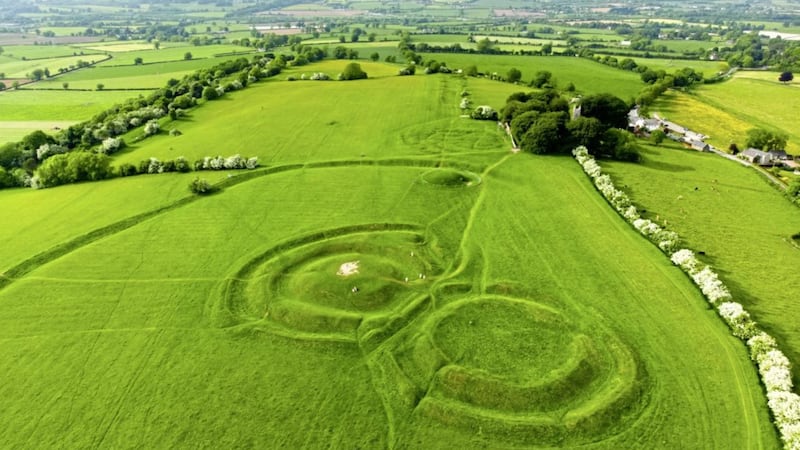THERE is is a sense of being between acts on this weekend when the shortest days of the year fall.
The last leaves finally wither and float to the ground. Migrating birds have all fled to warmer countries and those animals that can have bedded down for their winter hibernation.
The year’s crops have all been harvested and next year’s are still in storage, dormant and not yet placed in the ground.
For thousands of years of human history we have been marking this time of departure of the old and the rebirth of the new. Newgrange, in Co Meath, is our best known passage tomb and each solstice a privileged handful of people, clouds permitting, are able to experience the rays of the rising sun edging in to illuminate its inner chamber.
The religious rites associated with Newgrange are long lost in its 5,000-year history, but given its alignment to the point on the eastern horizon where the sun rises on the winter solstice it is clear that this date was of huge significance to our ancient ancestors.
Although I have never witnessed the actual solstice in Newgrange, I have often visited and seen how the visual impact on the inner chamber has been recreated. A finger of light slowly creeps along the passage and the inner chamber, with enigmatic carvings on its stone walls, is bathed in ethereal glow before the ray of sun retreats again.
Fragments of human bone and ashes have been found in the chamber and it is believed these were placed there for the solstice and that Newgrange’s builders probably believed that the spirit or souls of those who had died were carried, either literally or symbolically, out of the material world.
No matter what your beliefs, if any at all, the time and skill it took to built such a sophisticated structure and surreal way in which the sunlight illuminates it for just a few minutes on a handful of days each year is still a moving thing to witness.
In lieu of yet another year not winning a place to stand inside the inner chamber for the winter solstice I took a winter walk around nearby Tara this week. The earliest feature at Tara is Dumha na nGiall (the Mound of Hostages), which covers a passage tomb dating to the same period as Newgrange. However, the site at Tara continued to be used for a further 4,000 years until 1022.
Over those millennia its purpose changed and Lia Fáil (the Stone of Destiny) became associated with the inauguration of the kings of Ireland. According to legend only a true king of Ireland would be able to make Lia Fáil cry out when he placed a foot upon it.
Tara sits high above the surrounding countryside and it is said that on a clear day you can see a quarter of Ireland from it. Although the air was muggy this week, on previous visits I have seen the Mourne Mountains to the north and the Wicklow Mountains to the south, while the coast glistens to the east than the land rolls out in a series of drumlins to distant hills in the west.
The site itself spreads well beyond the main cairns and man-made hills and each visit opens up some new feature. Excavations are ongoing and new archaeology is still being uncovered.
In late December the hedgerows are bare, the denuded branches of the surrounding trees whipping back and forward in the wind.
The crows are the only birds to be heard as they pluck at the last straggle of withered berries.
And sometimes when you walk around the lower slopes of Tara you can find yourself overcome with a vague existentialist, out-of-body experience as you remember that humans have been walking this site for at least 5,000 years.








